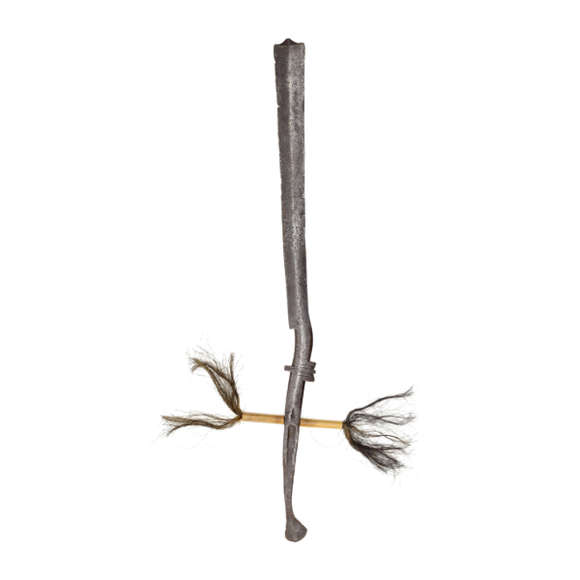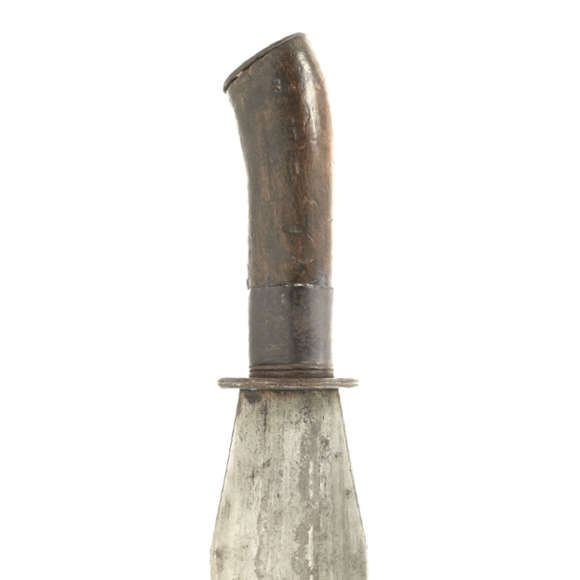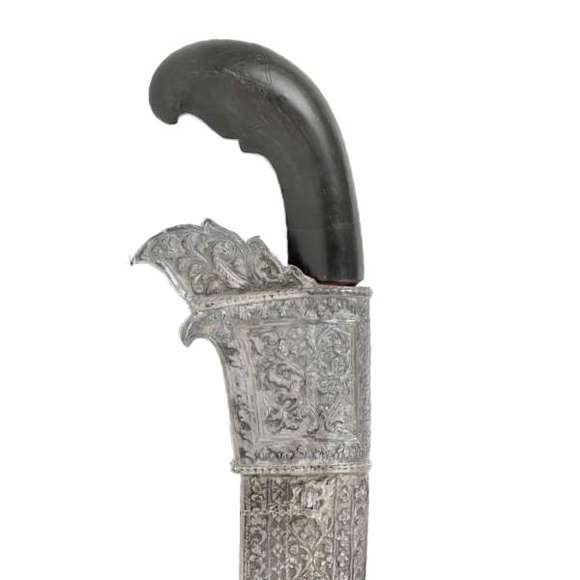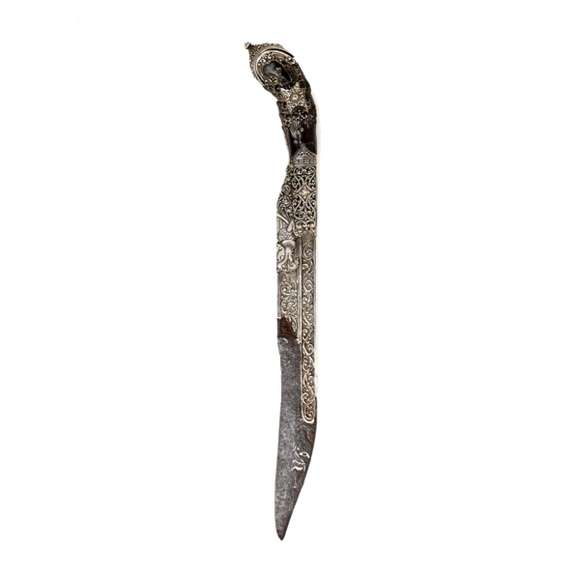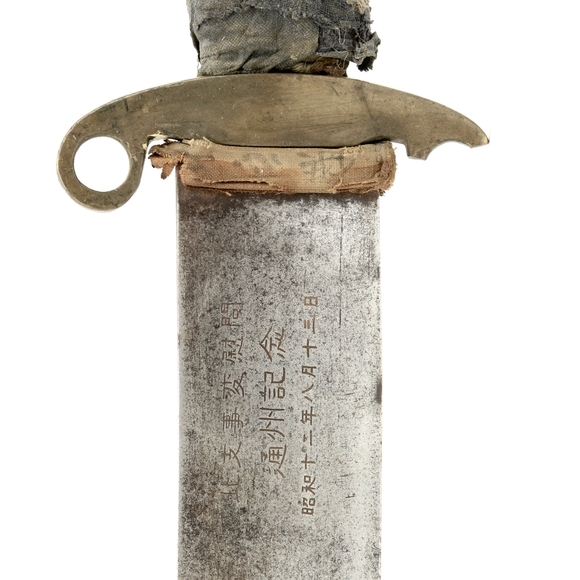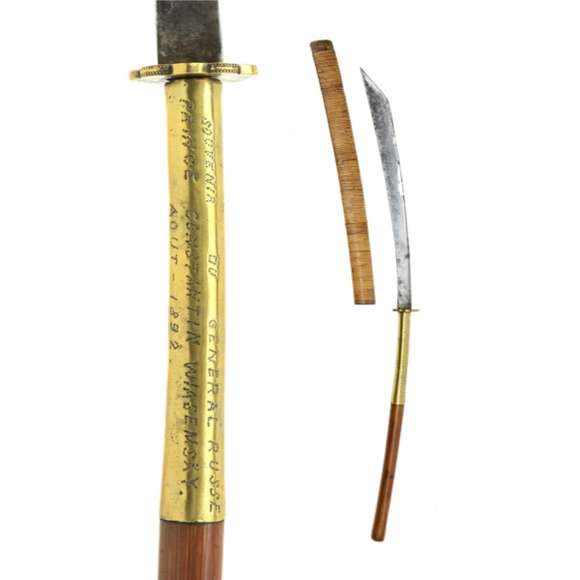Language: South Nias
Source: Schröder, 1917
Description
Lasara is the name of a mythical animal from the culture of Nias. It is said to have the body of a deer and a dragon's head.
It is often depicted as a monster head with a wide open mouth, usually carved from wood or horn. Other names used for the same creature were bemi (South Nias), binu (North Nias), n’omo and also behelb.1
It is carved among others on sword hilts, particularly the belato of South Nias. Carved lasara also adorned houses, in particular those for which a head was collected in a headhunting raid, which was thought to protect the house from evil spirits.2

The Nias lasara as depicted on a South Nias sword hilt.
What is the lasara?
Schröder, insist they are stylized elephants, while some other researchers have seen boar and snake heads in them.3 It has also been argued the lasara may be related to the Indian makara, to which it indeed bears some resemblance.
Like Fischer, I strongly believe it is styled after the wild boar.4 The arrangement of the teeth, with oversized lower canines and upper canines that curl upwards, out of the mouth, are unique to the boar.
The animal gained considerable respect from the local population as it defends itself so fiercely when hunted. The Japanese samurai revered the boar for the same reason. Boar tusks are also a part of the war dress of Nias chiefs, see picture below.

South Nias chiefs in war dress.
Tropenmuseum Amsterdam, accession number 60042492.
Notes
1. Engelbertus Eliza Willem Gerards Schröder; Nias. Ethnographische, geographische en historische aanteekeningen en studiën. Brill, Leiden. 1917. Page 109.
2. Ibid.
3. Ibid. Also Elio Modigliani; Un Viaggo a Nías. 1890.
4. Fischer, H.W.; Catalogus van 's Rijks Ethnographisch Museum, Deel IV, de Eilanden om Sumatra. E.J. Brill, Leiden, 1909. Page 39.

